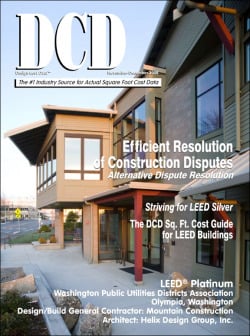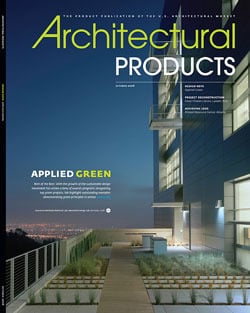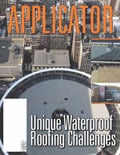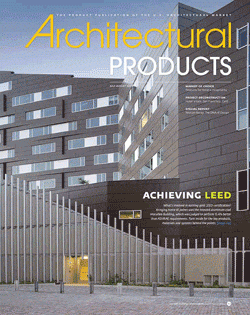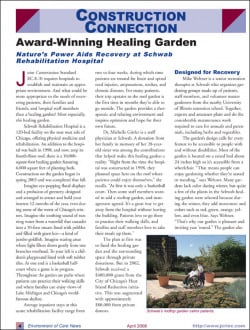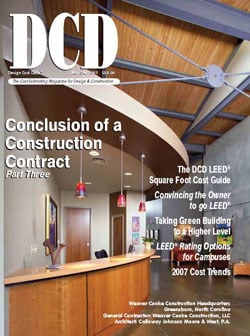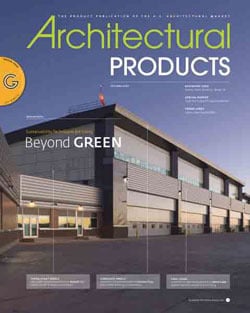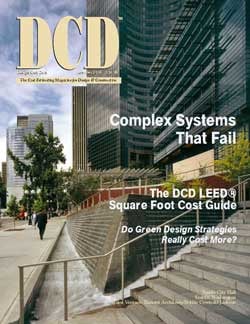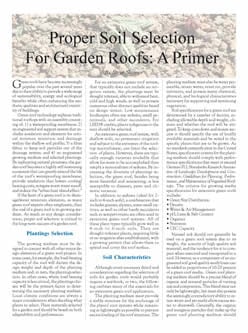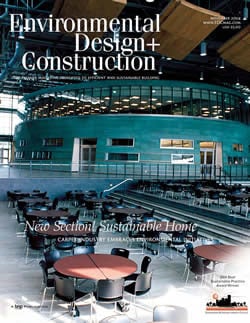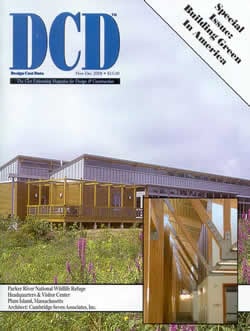
Press & Media Coverage
Below are the most up-to-date press releases & media coverage from American Hydrotech. Click on a headline, thumbnail or "Read More" link to continue reading or to save a PDF copy to your computer. If you have any questions or would like to request more information, please contact our Customer Service department.
With its high profile green roof and other sustainable design features, St. Louis Zoo’s new Orthwein Animal Nutrition Center serves as one of the first non-animal exhibits in the zoo’s history.
The St. Louis Zoo has made its new animal nutrition center, typically a back-of-house facility at most zoos, a major component of its public exhibit. In addition, the zoo’s new Orthwein Animal Nutrition Center (OANC) educates and informs visitors not only of the importance of plant material and nutrition for animals and animal conservation, but also serves as a high profile showcase for sustainable design.
A green roof is a high-performance environmental statement. Not only do they provide building owners and occupants with several ecological, technical, and economic benefits, but thanks to technological advances, today's green roofs present opportunities for the design professional to transform virtually any flat or sloped roof into a landscaped environment.
The long-term success of a green roof revolves around two main objectives: water tightness and vegetation. A quality seamless waterproofing membrane should be the foundation of every green roof. This article addresses the six essential elements that are critical to the success of an extensive green roof ’s vegetation:
Green roofs atop the new U.S. Census Bureau Headquarters Building provide natural insulation, minimize rainwater runoff and improve outside air quality. They also offer a sensational view for upper floor occupants and provide for a pleasant walk between the two wings of this sprawling complex.
The new U.S. Census Bureau Headquarters at Suitland Federal Center, Suitland, Md., is a state-of-the-art facility, designed and built to provide a world-class workplace for 6,000 of “America’s Fact Finders.” The complex is one of the most impressive buildings in the General Services Administration’s (GSA’s) portfolio, with sweeping curves and glass cladding with vertical wooden louvers. And it is not short on green space, either.
A great deal of hype surrounds the term green. To provide a little insight into what's actually going into LEED-certified projects, Architectural Products presents "Achieving LEED," a snap shot of the key products and materials behind the LEED points.
Joint Commission Standard EC.8.10 requires hospitals to establish and maintain an appropriate environment. And what could be more appropriate to the needs of recovering patients, their families and friends, and hospital staff members than a healing garden? Most especially, this healing garden.
Schwab Rehabilitation Hospital is a 120-bed facility on the near west side of Chicago, offering physical medicine and rehabilitation. An addition to the hospital was built in 1998, and now, atop its fourth-floor roof, there is a 10,000- square-foot healing garden featuring 6,000 square feet of planting beds. Construction on the garden began in spring 2003 and was completed that fall.
It’s a new world when it comes to commercial architecture and construction. No longer is the
focus only on expert craftsmanship, innovative design and attention to detail. Rather, all eyes are examining the process itself, the materials used, and most of all, the impact of construction on the environment. And there has been a quite a crowd jumping on the green bandwagon.
Demonstration Roof The American Society of Landscape Architects decided its own roof would make an excellent demonstration model.
Challenge: The American Society of Landscape Architects (ASLA) wanted a high profile location to demonstrate how landscape architects can play a central role in green roof design and construction. The organization decided to look no further than atop its own Washington, D.C., headquarters building—a black tar surfaced roof on the 11-year-old brick building.
Lushly planted green roofs that change color with the season are the centerpieces of two new buildings in downtown Seattle. The roofs provide not only a distinctive design feature for the buildings but also important environmental and economic benefits for the city of Seattle.
The Justice Center’s 8,500 square-foot garden roof was completed in 2002. From the very beginning, sustainability was a top design criterion, says Knut Hansen, senior associate for project architect NBBJ Design. The design features an intricate planting design guided by an image of sunlight reflected in a shallow streambed. But not only is the design visually appealing, the plants on the roof retain moisture and reduces the amount of stormwater entering the city’s storm sewer system.
Green roofs have become increasingly popular over the past several years due to their ability to provide a wide range of sustainability, energy and ecological benefits while often enhancing the aesthetic qualities and architectural creativity of buildings.
Visitors to Seattle’s new City Hall and Justice Center probably don’t spend much time considering the sustainability, energy savings and ecological benefits of these new civic buildings’ high profile garden roofs. They’re too busy enjoying the views.
With the State of Maryland's Smart Growth initiatives, adopted in July of 2002, we (DNC Architects, Inc.) were able to demonstrate that a greeen roof, with all the associated benefits, could be added to a redevelopment project and that the payback would be immediate.
Below are the most up-to-date press releases & media coverage from American Hydrotech. Click on a headline, thumbnail or "Read More" link to continue reading or to save a PDF copy to your computer. If you have any questions or would like to request more information, please contact our Customer Service department.



